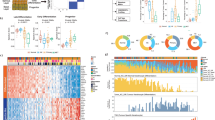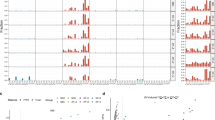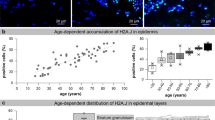Abstract
Renal allograft recipients suffer from a markedly increased susceptibility to premalignant and malignant cutaneous lesions. Although various aetiological factors have been implicated, little is known of the associated genetic events. In this study we initially employed immunocytochemical techniques to investigate the prevalence and localisation of accumulated p53 in over 200 cutaneous biopsies (including 56 squamous cell carcinomas) from renal allograft recipients and immunocompetent controls. In renal allograft recipients accumulated p53 was present in 24% of uninvolved skin samples, 14% of viral warts, 41% of premalignant keratoses, 65% of intraepidermal carcinomas and 56% of squamous cell carcinomas [squamous cell carcinoma and intraepidermal carcinoma differed significantly from uninvolved skin (P < 0.005) and viral warts (P < 0.01)]. A similar trend was revealed in immunocompetent patients (an older, chronically sun-exposed population) but with lower prevalence of p53 immunoreactivity: 25% of uninvolved skin samples, 0% of viral warts, 25% of keratoses, 53% of intraepidermal carcinomas and 53% of squamous cell carcinomas. These differences were not statistically significant. Morphologically, p53 immunoreactivity strongly associated with areas of epidermal dysplasia and the abundance of staining correlated positively with the severity of dysplasia. These data suggest that p53 plays a role in skin carcinogenesis and is associated with progression towards the invasive state. No correlation was observed between accumulated p53 and the presence of human papillomavirus (HPV) DNA in any of the lesions. Single-strand conformational polymorphism analysis (exons 5-8) was used to determine the frequency of mutated p53 in 28 malignancies with varying degrees of immunopositivity. p53 mutations were found in 5/9 (56%) malignancies with p53 staining in > 50% of cells, reducing to 1/6 (17%) where 10-50% of cells were positively stained and none where < 10% of cells were stained. These data imply that factors other than p53 gene mutation play a part in accumulation of p53 in skin cancers.
This is a preview of subscription content, access via your institution
Access options
Subscribe to this journal
Receive 24 print issues and online access
$259.00 per year
only $10.79 per issue
Buy this article
- Purchase on Springer Link
- Instant access to full article PDF
Prices may be subject to local taxes which are calculated during checkout
Similar content being viewed by others
Author information
Authors and Affiliations
Rights and permissions
About this article
Cite this article
Stark, L., Arends, M., McLaren, K. et al. Accumulation of p53 is associated with tumour progression in cutaneous lesions of renal allograft recipients. Br J Cancer 70, 662–667 (1994). https://doi.org/10.1038/bjc.1994.367
Issue Date:
DOI: https://doi.org/10.1038/bjc.1994.367
This article is cited by
-
High-risk human papillomavirus in non-melanoma skin lesions from renal allograft recipients and immunocompetent patients
British Journal of Cancer (2011)



